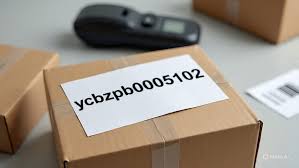The Mysterious Code of Qkfzzu1lbnvinhp4dlhz: What Does It Really Mean?
Have you ever come across a strange code or random-looking string of letters and numbers that made you pause for a second and wonder, what in the world is that? If you’ve recently stumbled upon the term “qkfzzu1lbnvinhp4dlhz,” you’re not alone. At first glance, it seems like gibberish—just a chaotic mix of characters. But sometimes, what looks random hides something deeper.
In this article, we’ll explore the fascinating world behind this mysterious phrase, dive into the possible meanings, and uncover why sequences like “qkfzzu1lbnvinhp4dlhz” spark so much curiosity. We’ll also see how similar codes play surprising roles in modern technology, creativity, and even personal expression. Ready? Let’s decode the mystery together.
The First Impression: A Code or Just Chaos?
When people first see qkfzzu1lbnvinhp4dlhz, most assume it’s nonsense. It doesn’t follow normal word patterns, and it doesn’t belong to any known language. But that’s what makes it so interesting. It looks like the kind of thing you’d find in a password field, a secret encryption key, or a file name hidden deep inside a computer system.
Random-looking sequences like this often trigger our curiosity because they feel intentionally confusing. Our brains love patterns, and when they don’t find one, they immediately try to make sense of the chaos. That’s where the intrigue begins. Is this random? Or is there a hidden purpose behind it?
The Hidden Language of Random Strings
Before we jump to conclusions, it’s helpful to understand what these random strings might represent. In the world of digital systems, sequences like qkfzzu1lbnvinhp4dlhz are far from meaningless. In fact, they are everywhere—inside your phone, your computer, and even your social media accounts.
For example:
-
Encryption keys often use random strings to protect sensitive data.
-
Unique identifiers (UIDs) label files, users, or digital objects in databases.
-
Temporary URLs use similar patterns to hide private links.
-
Captcha systems use random letters and numbers to prove you’re human.
So even though it looks chaotic, “qkfzzu1lbnvinhp4dlhz” could very well be a digital fingerprint—unique, functional, and vital to how the modern internet works.
The Beauty of Randomness
At a deeper level, there’s something strangely beautiful about randomness. The sequence qkfzzu1lbnvinhp4dlhz might not follow the rules of language, but it follows the rules of unpredictability. Every letter and number contributes to a structure that can’t easily be guessed or duplicated.
Think about it: in a world full of patterns, randomness brings security. It keeps hackers from breaking passwords. It ensures no two systems collide with the same identifier. It even drives innovation in creative fields, like generative art or procedural music, where algorithms rely on randomness to produce endless variety.
So yes—it may look meaningless, but randomness is an essential ingredient in both technology and creativity.
Could It Be a Hidden Message?
Now, here’s where curiosity really takes off. What if qkfzzu1lbnvinhp4dlhz isn’t just a random code? What if someone intentionally crafted it to mean something—something hidden beneath the surface?
People have always loved puzzles. From secret ciphers in ancient letters to mysterious messages in modern-day internet lore, humans can’t resist a good mystery. Maybe this string is part of a game, a digital breadcrumb left behind for the right person to decode.
It wouldn’t be the first time. Think of:
-
Cicada 3301, a cryptic online puzzle that challenged codebreakers around the world.
-
ARGs (Alternate Reality Games) that mix fiction with reality through hidden clues.
-
Easter eggs in software and games that reward the curious with secret content.
Could qkfzzu1lbnvinhp4dlhz belong to one of these hidden worlds? It’s possible. Every great mystery starts with something that seems meaningless—until someone looks closer.
From Random Codes to Human Meaning
Here’s an interesting thought: even if “qkfzzu1lbnvinhp4dlhz” started as a machine-generated string, it can still carry meaning for people. Humans have a unique ability to give purpose to anything—even the random.
Some see patterns where none exist. Others use randomness as inspiration. Artists, writers, and developers have all taken random codes and turned them into names, titles, or creative concepts.
Imagine naming a digital art project after this code. Suddenly, it transforms from a cold sequence into a brand. A mystery becomes an identity. That’s the power of human creativity—turning the meaningless into something meaningful.
The Role of Random Codes in Everyday Life
Let’s step back and think about how often we interact with random codes like qkfzzu1lbnvinhp4dlhz without even realizing it. They’re woven into our digital lives.
Here are a few examples:
-
Email verification links use random sequences to ensure your identity.
-
Online gaming servers assign random session codes to players.
-
Banking systems rely on random transaction IDs for security.
-
Social media uploads are tagged with unique identifiers like this one.
Each of these examples uses the same principle—uniqueness through randomness. Without these identifiers, digital systems would easily confuse data or become vulnerable to duplication and fraud.
So, while “qkfzzu1lbnvinhp4dlhz” might look odd, it’s part of the unseen infrastructure that makes the internet function smoothly.
How Our Brains React to the Unknown
There’s also a psychological layer to this. When we see something we don’t understand, like qkfzzu1lbnvinhp4dlhz, our minds immediately start searching for meaning. It’s a built-in survival trait. We want order. We want clarity. We want to make sense of the unknown.
That’s why mysterious codes often go viral. They invite people to speculate, discuss, and investigate. Even if there’s no real meaning behind them, the process of searching gives them value.
It’s the same curiosity that drives scientists to explore space or archaeologists to study ancient texts. Our brains are wired for discovery, and even a small code can spark that flame.
Could It Be an Online Identity?
In some cases, random sequences like qkfzzu1lbnvinhp4dlhz are used as usernames, handles, or digital signatures. People choose such strings to stay anonymous or to create a unique identity online.
It’s a fascinating cultural trend. In a digital world where millions of people share similar names, using a seemingly random code can make someone stand out. It says, “I’m different. I’m not trying to fit into traditional labels.”
For example:
-
A gamer might use qkfzzu1lbnvinhp4dlhz as a tag to stay untraceable.
-
A digital artist might adopt it as a mysterious pseudonym.
-
A content creator might brand themselves around its uniqueness.
In that way, the code becomes personal—an alias, an identity, a secret badge of individuality.
Randomness and Digital Security
Behind the scenes, randomness plays a crucial role in keeping our digital world safe. The more unpredictable a code is, the harder it is to break. That’s why strings like qkfzzu1lbnvinhp4dlhz are ideal for cryptography and password generation.
A strong password uses unpredictability to prevent attacks. In cryptographic systems, random sequences act as “keys” that lock and unlock information. Without the correct key, the data stays hidden.
That’s what makes randomness so powerful—it creates safety through complexity. And while the average person might not think twice about a code like this, cybersecurity professionals see it as a symbol of digital resilience.
The Art of Naming the Unnameable
Let’s imagine for a moment that qkfzzu1lbnvinhp4dlhz wasn’t generated by a machine at all. Suppose someone intentionally created it to provoke curiosity, to make you think. In that case, it becomes something else entirely—a piece of art.
Artists often use ambiguity to engage their audiences. The unknown invites interpretation, and interpretation invites imagination. By giving no clear meaning, a code like this becomes a blank canvas for thought.
Maybe it’s a name for an experimental music project. Maybe it’s the title of a mysterious novel. Or maybe it’s a metaphor for the randomness of life itself—unpredictable, complex, and yet somehow beautiful.
Why We’re Drawn to Mystery
There’s something undeniably magnetic about mystery. Humans are natural seekers, and even when we know something might be meaningless, we still feel compelled to explore it. Qkfzzu1lbnvinhp4dlhz fits perfectly into that psychological space—it’s open-ended, undefinable, and intriguing.
That’s why mysterious online codes and names keep reappearing. They give people something to discuss, something to decode, something to connect over. And in the process, they create a small but meaningful piece of shared culture.
The Digital Mythology of Random Codes
As strange as it sounds, every code tells a story. Some start as technical identifiers, others as creative accidents, but all of them eventually gain meaning through human interaction. The internet has turned randomness into mythology.
People take screenshots, share theories, and create entire discussions around sequences like qkfzzu1lbnvinhp4dlhz. It’s the modern version of folklore—myths born not from nature or gods, but from algorithms and imagination.
That’s the beauty of digital culture: even randomness can become legend.
Learning From Randomness
So, what can we learn from a strange sequence like this? At first glance, it’s just letters and numbers. But if you look closer, qkfzzu1lbnvinhp4dlhz reminds us of a few powerful truths:
-
Not everything needs to make sense to have value.
-
Mystery sparks curiosity, and curiosity leads to discovery.
-
Randomness fuels creativity, security, and progress.
In short, what seems meaningless might actually hold unexpected significance. The secret lies in how we interpret it.
From Confusion to Connection
Perhaps the real meaning of qkfzzu1lbnvinhp4dlhz isn’t hidden in code at all. Maybe it’s found in the way it connects people—through curiosity, discussion, and imagination. A simple string of characters can start conversations that bridge ideas across technology, psychology, and art.
And that’s something truly remarkable. Out of randomness comes connection. Out of confusion comes understanding.
Conclusion: The Wonder of the Unknown
In the end, the mystery of qkfzzu1lbnvinhp4dlhz teaches us an important lesson: not everything that looks random is meaningless. Sometimes, randomness hides structure. Sometimes, it hides intention. And sometimes, it simply invites us to explore our own interpretations.
The next time you encounter a strange code or symbol online, pause for a moment. Ask yourself—what story could this tell? You might be surprised at how much beauty and meaning can emerge from the most unexpected places.
So while qkfzzu1lbnvinhp4dlhz might never reveal its original purpose, it has already done something extraordinary—it captured your attention, sparked your imagination, and invited you to see wonder in the unknown.




Post Comment